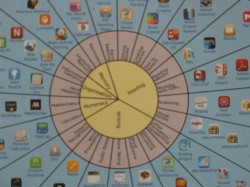 The world is changing, and for individuals with specific learning disabilities (SLD) who have trouble reading and writing, that is a good thing! The change is the explosion of mobile devices and the thousands of apps available for them. According to the American Psychiatric Association, in the United States school-aged population, 4% of students are affected by a reading disorder, and 10% are affected by a writing disorder. For these students, the pairing of mobile devices and appropriate apps can be the difference between literacy and illiteracy, independence and dependence, employment and unemployment. If you’re interested, but don’t know where to start, read on!
The world is changing, and for individuals with specific learning disabilities (SLD) who have trouble reading and writing, that is a good thing! The change is the explosion of mobile devices and the thousands of apps available for them. According to the American Psychiatric Association, in the United States school-aged population, 4% of students are affected by a reading disorder, and 10% are affected by a writing disorder. For these students, the pairing of mobile devices and appropriate apps can be the difference between literacy and illiteracy, independence and dependence, employment and unemployment. If you’re interested, but don’t know where to start, read on!
While working with an individual with SLD, I discovered a wonderful tool to assist in matching the presenting difficulty to an app that specifically addresses it. The tool is the “Wheel of Apps” developed by CALL Scotland, at the University of Edinburgh. It organizes relevant, useful apps by task areas that are typically problematic for people who struggle to read and write. If you or someone you know could benefit from listening to rather than reading text, having lectures recorded rather than taking notes, or viewing a simplified screen when using the internet or word processing programs, this wheel is a great place to start! Use it to explore apps that provide word prediction, text to speech, talking books, and many other features. If you want more in-depth information about iPads and apps to support teaching and learning, check out this free download, “iPads for Communication, Access, Literacy and Learning,” also by CALL Scotland.
May your exploration lead to assistive technology solutions that promote literacy, independence and employment! If you already use an app to help with reading and writing and want to share your success, let IPAT know.
